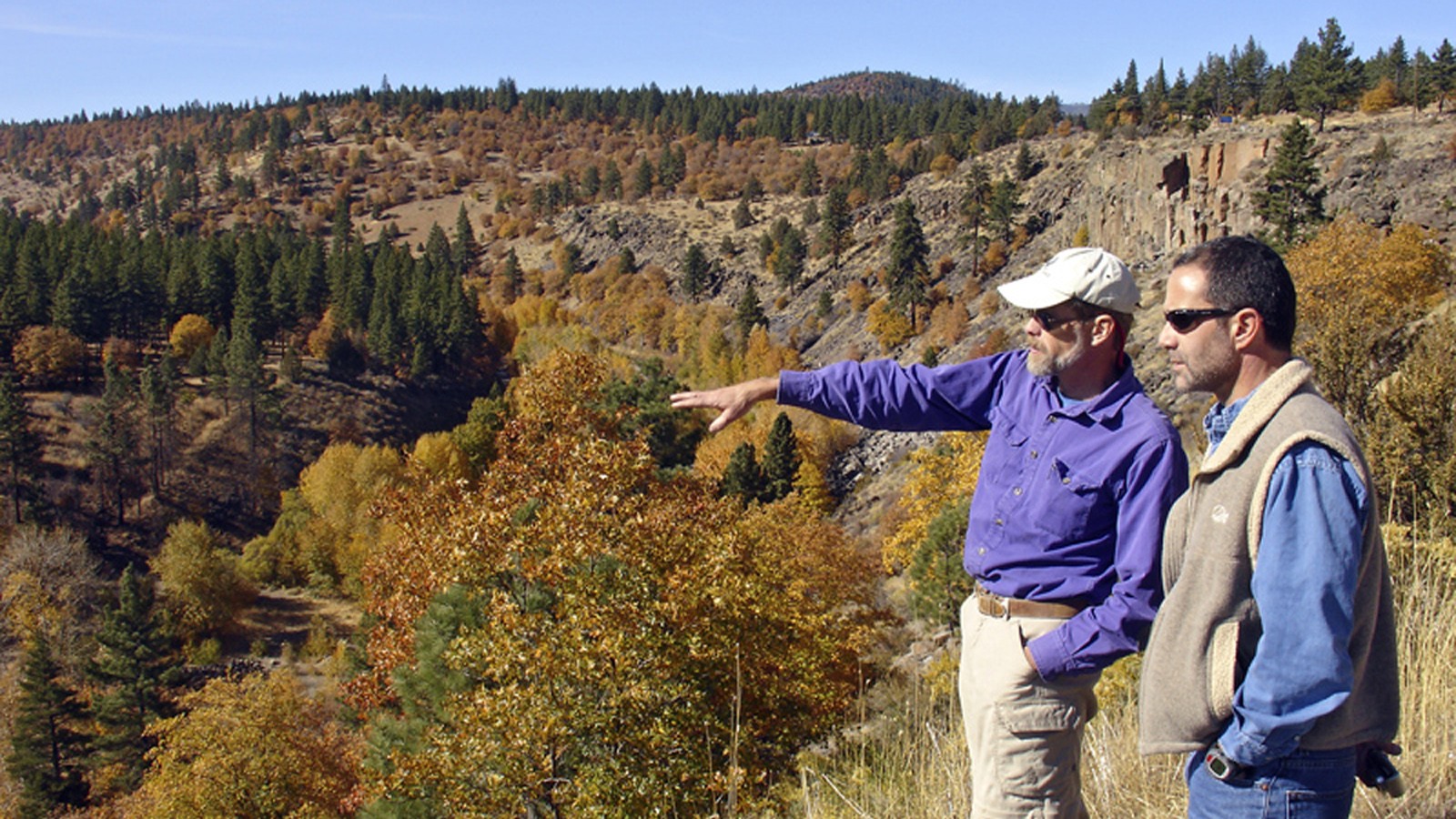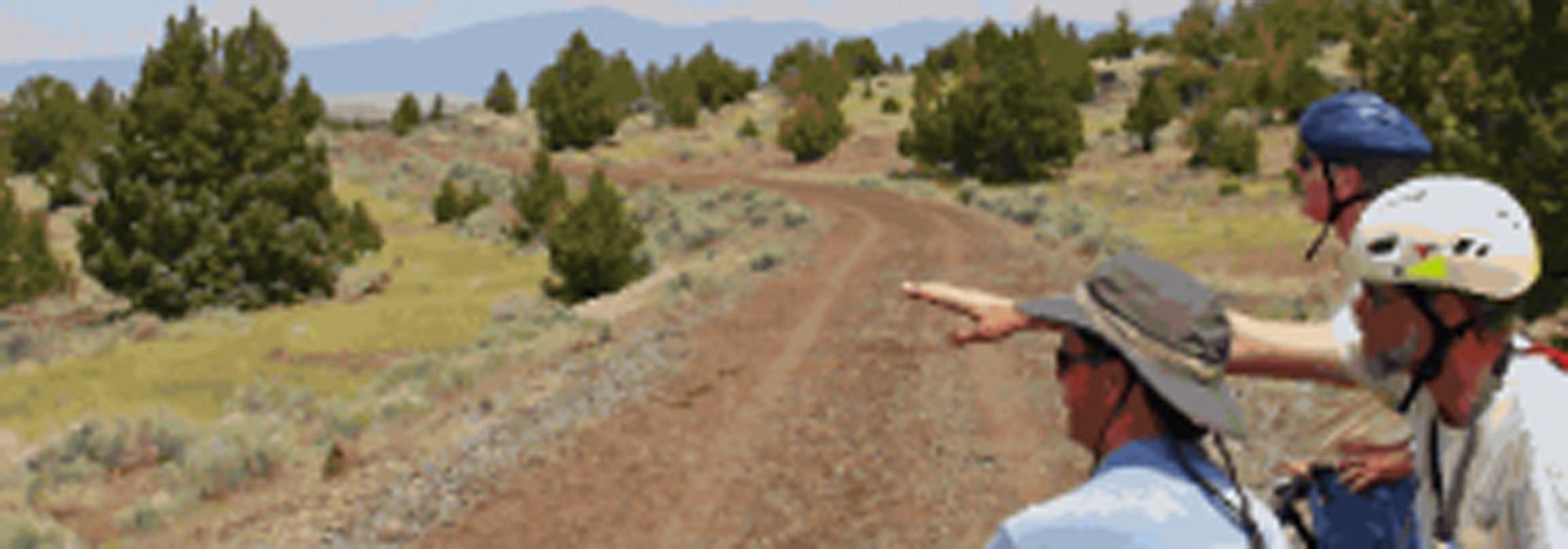It Takes One: Stan Bales
I have lived in Northeastern California for nearly three decades working to conserve natural resources, enhance recreation opportunities, improve tourism and enhance the quality of life for residents in these rural communities that I and my family call “home.” I am passionate about this country’s diverse landscapes and encouraging people to get out and experience them firsthand. Fortunately, passion and career are wed in my capacity as an Outdoor Recreation Planner for the Bureau of Land Management.
I love nothing quite so much as taking a group out on our trails, up mountains, or along river canyons on foot, bike or skis, whether it’s a group of Boy Scouts, members of our regional Lassen Land and Trails Trust or visitors to our community. The Sierra Nevada, Cascades, Great Basin and Modoc Plateau converge here in Lassen County, lending the region unique geological features, scenic vistas, natural resources, and wildlife habitats all coupled with a long standing heritage of farming and ranching.
Economic pressures and a shifting industry base have left regional rail lines, which originally served as routes for resource extraction, abandoned. It just made sense to leverage these abandoned lines for resource enjoyment and protection. With the reductions in the timber industry, our rural communities are struggling and outdoor tourism offers an opportunity to diversify our regional economy, create jobs and reinvigorate our local businesses. The rail lines traverse some of the most spectacular and otherwise inaccessible landscapes. Two of the rail lines – the old Fernley-Lassen line and the Modoc line – have been rail banked and purchased for the public’s enjoyment as rail trails thanks to partnerships between Lassen Land and Trails Trust, the United States Forest Service and the Bureau of Land Management, aided by community meetings and a great deal of planning. In addition, I worked with Lassen Land and Trails Trust, and continue to volunteer with them on my own time, to help preserve and restore the City of Susanville’s historic railroad depot, which now serves as a popular visitor center and information station at the eastern terminus of the 26-mile Bizz Johnson Trail.
The Fernley-Lassen line, now the nationally recognized Bizz Johnson National Recreation Trail, was abandoned in the late 1970s, and our community coalition worked tirelessly. Now this rails to trails conversion has served as a model for community partnerships and rail trail conversions across the nation. Today, our own experience is helping us develop 85.6 miles of the Modoc line.

How would you define a cultural landscape?
My professional work focuses on wilderness areas and open range. Many would not consider these cultural landscapes, yet indigenous people have impacted these lands for thousands of years. More recently, in just the past two centuries, the rush to extract minerals and timber brought speculators and industry to the region and they left their mark on the landscape, too, including the railroads. Settlers came and stayed, building farms and ranches, many of which are still owned and managed by the same families. I consider it all to be a cultural landscape, one that has been shaped by those who’ve lived here and one that has, in turn, defined the character of those who’ve stayed.
Why did you get involved in the landscape that was threatened in your community?
Initially, it was my professional responsibility to identify and develop recreational opportunities and a regional recreational resource plan for the Bureau of Land Management that got me involved. The abandoned railroads ran through or adjacent to public lands, and we shared a vision of creating a multi-use recreation trail on the beds of these abandoned lines with Lassen Land and Trails Trust, the City of Susanville, Lassen County and the US Forest Service. Within the Department of the Interior and the Bureau of Land Management, we worked on land exchanges and Land and Water Conservation Fund projects that ultimately secured rights-of-way along the trail. This work also led to acquisition of adjacent lands, limiting development and preserving the integrity and viewshed of the Bizz Johnson Trail in its Susan River canyon setting.
Our coalition of partners was also able to pique the interest of then-Representative Harold T. “Bizz” Johnson, who recognized the value of the project and helped the community realize its dream. In 1983, Congress named the trail after Congressman Johnson, who represented Northern California from 1958 to 1980. Now, 28 years and tens of thousands of visitors later, we are engaged in the development of the Modoc line, which will someday link the Bizz Johnson and Susanville with the community of Alturas, to the north in Modoc County.
How did your understanding of this landscape change as a result of your advocacy efforts?
It is the recognition and understanding of the common ground we all share, our love for this rugged landscape with all its variety and dramatic vistas. So many people have joined together to see the preservation of these rail lines as rail trails. It is rewarding to travel one of these trails and encounter a rancher moving cattle, a bicyclist or hiker, or rider on an off-road vehicle all sharing the trail, engaging with the same landscape and having different experiences yet equally important and valued ones.
Did the understanding of others change as well? If so, how?
In the process of preserving each of these trails, we found that private property owners initially fearful that a public trail near their homes would lead to problems such as vandalism and littering, have become some of the strongest supporters of the trails. Today, a location near the Bizz Johnson Trail is seen as an added value for homes. The landscape is helping us learn to appreciate and respect one another.
What is the message you would like to give our readers that may inspire them to make a difference?
Honest, open and frequent communication is the key. Simply talking about your own passion for the landscape, sincerely and effectively, will help others to recognize their own connection and discover their own passion. We continue to work to incorporate Bizz Johnson Trail outings as part of students’ study of local history and ecology. Working with the land trust, we coordinate numerous trail cleanups and improvement projects involving local schools, youth groups, charities and sporting groups. This engages the whole community, and that’s what will sustain these trails and the landscape surrounding them.







